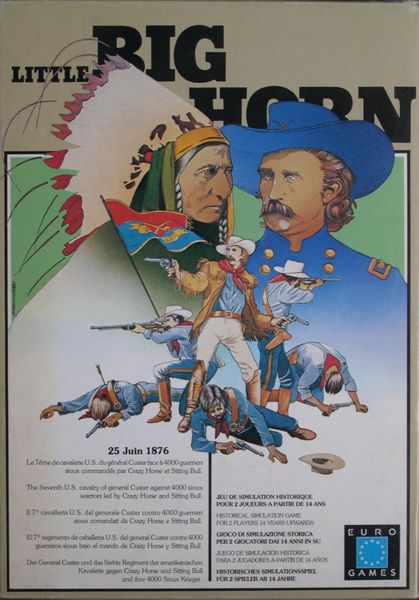Little Big Horn (1981) Board Game
Little Big Horn is a board game that was released in 1981 and is set during the American Indian Wars. The game allows players to reenact the famous battle of Little Bighorn, where General Custer and his troops were defeated by Lakota, Northern Cheyenne, and Arapaho warriors.
Game Components of Little Big Horn
How To Setup Little Big Horn
The setup involves placing the US Cavalry units at the southern edge of the map, while the Native American forces are set up in their respective camps along the Little Bighorn River. The game requires careful placement of units and non-combatant pieces. For the Native American player, the setup includes determining which tribes are present and where they are placed, with the cavalry player unaware of the exact distribution until they are within spotting distance.
Gameplay Mechanics and Game Objective
Player Experience
Playing Little Big Horn can be a complex and challenging experience, especially due to the variability in unit distribution and the unknown number of enemy forces. The game requires strategic planning and adaptability, as the cavalry must navigate through terrain to reach and engage the Native American forces. The Native American player must balance defense and offense, ensuring the safety of non-combatants while launching effective attacks against the cavalry.
Pros
Cons
Personal Thoughts on Little Big Horn
Little Big Horn is a game suited for fans of historical war games and those who enjoy strategic challenges. It is not for the casual gamer due to its complexity and the need for careful planning and execution. The game’s historical context and dynamic gameplay make it a compelling choice for those interested in military strategy and the history of the American West. However, the potential for confusing rules and setup may deter some players, so it is advisable to approach with patience and a willingness to learn the intricate mechanics.
We are supported by our audience. When you purchase through links on our site, we may earn an affiliate commission, at no extra cost for you. Learn more.

